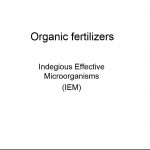
27 downloads
Title of document: Organic fertilizers “Indegious Effective Microorganisms (IEM)” Authors: Journal’s name if any: Ministry/Government Agency/Organisation: Year of publication: Geographic focus: General Main issues / topics addressed (for example: What are Indigenous Effective Microorganisms (IEM); how to make IEM and IEM Bokashi……) School of agroecology (if any): Web address to original document (if any): Summary: This presentation for how to do “IEM ball and IEM Bokashi” Read More
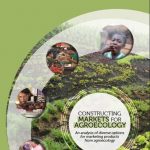
52 downloads
Title of document: Constructing markets for agroecology “An analysis of diverse options for marketing products from agroecology” Authors: Allison Loconto, Alejandra Jimenez and Emilie Vandecandelaere Journal’s name if any: Ministry/Government Agency/Organisation: FAO, INRA Year of publication: 2017 Geographic focus: Global level Main issues / topics addressed (for example: Introduction; Markets for agroecology; Agroecological markets; Conclusions and Recommendations……) School of agroecology (if any): Web address to original document (if any): https://www.researchgate.net/publication/320193869_What_might_an_agro-ecological_food_system_look_like https://www.researchgate.net/profile/Allison_Loconto/publication/320193869_What_might_an_agro-ecological_food_system_look_like/links/5a419323458515f6b04cf0c6/What-might-an-agro-ecological-food-system-look-like.pdf Summary: The purpose of this study is to explore whether and how products from agroecological production systems are being valued in markets. This exploratory study has been conducted using a conceptual framework from economic sociology. It produced qualitative and descriptive evidence from the perspective of producers, consumers and intermediaries working within specific initiatives. These initiatives are created to ensure that food from agroecological production is exchanged and traded between producers and consumers. They also illustrate how the organization of networks and the creation of “value” form markets for agroecology. The study is based on a meta-analysis of 12 case studies, mainly from developing and emerging countries and one developed country (Benin, the Plurinational State of Bolivia, Brazil, Chile, China, Colombia, Ecuador, France, Kazakhstan, Mozambique, Namibia, Uganda), with the collection of small samples of empirical data. Based on a meta-analysis of 12 case studies from different ongoing initiatives around the world, we focus on how different types of local actors (producers, consumers and intermediaries) create markets for agroecological products. The results show that markets for agroecological products do exist, but are not always separate from organic markets. Read More
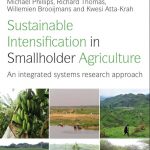
15 downloads
Title of document: Sustainable Intensification in Smallholder Agriculture “An integrated systems research approach” Authors: Ingrid Öborn, Bernard Vanlauwe, Michael Phillips, Richard Thomas, Willemien Brooijmans and Kwesi Atta-Krah Journal’s name if any: Ministry/Government Agency/Organisation: Routledge Year of publication: 2017 Geographic focus: Global level Main issues / topics addressed (for example: Conceptual underpinning of system research; sustainable intensification in practice; integrating nutrition, gender and equity in research for improved livelihood; Systems and institutional innovation……) School of agroecology (if any): Web address to original document (if any): https://www.routledge.com/Sustainable-Intensification-in-Smallholder-Agriculture-An-integrated-systems/Oborn-Vanlauwe-Phillips-Thomas-Brooijmans-Atta-Krah/p/book/9781138668089 Summary: Sustainable intensification has recently been developed and adopted as a key concept and driver for research and policy in sustainable agriculture. It includes ecological, economic and social dimensions, where food and nutrition security, gender and equity are crucial components. This book describes different aspects of systems research in agriculture in its broadest sense, where the focus is moved from farming systems to livelihoods systems and institutional innovation. Much of the work represents outputs of the three CGIAR Research Programs on Integrated Systems for the Humid Tropics, Aquatic Agricultural Systems and Dryland Systems. The chapters are based around four themes: the conceptual underpinnings of systems research; sustainable intensification in practice; integrating nutrition, gender and equity in research for improved livelihoods; and systems and institutional innovation. While most of the case studies are from countries and agro-ecological zones in Africa, there are also some from Latin America, Southeast Asia and the Pacific. Read More
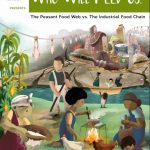
15 downloads
Title of document: Who Will Feed Us? The Industrial Food Chain vs. the Peasant Food Web Authors: ETC Group Journal’s name if any: Ministry/Government Agency/Organisation: ETC Group Year of publication: 2017 Geographic focus: Global level Main issues / topics addressed (for example: 24 questions about our food system……) School of agroecology (if any): Web address to original document (if any): http://www.etcgroup.org/files/files/etc-whowillfeedus-english-webshare.pdf Summary: ETC Group is a non-profit international civil society organization registered in the USA, Canada and the Philippines. ETC Group’s booklet builds on the 2009 and 2013 editions, updating our research contrasting the Peasant Food Web and the Industrial Food Chain. Who Will Feed Us, now in its third edition, compares the industrial food system with peasant farming. By using 24 questions about our food system Read More

43 downloads
Title of document: Agriculture at a Crossroads “IAASTD findings and recommendations for future farming” Authors: Angelika Beck, Benedikt Haerlin and Lea Richter Journal’s name if any: Ministry/Government Agency/Organisation: Agriculture at a Crossroads Year of publication: 2016 Geographic focus: Global level Main issues / topics addressed (for example: hunger and health, meat and animal feed, industrial and small-scale farming, agroecology, climate and energy, soil fertility and land grabbing……) School of agroecology (if any): Web address to original document (if any): https://www.globalagriculture.org/fileadmin/files/weltagrarbericht/EnglishBrochure/BrochureIAASTD_en_web_small.pdf Summary: The International Assessment of Agricultural Knowledge, Science and Technology for Development (IAASTD), commonly known as the World Agriculture Report. More than 400 scientists from all continents and a broad spectrum of disciplines worked together for four years with the aim of answering the following question: “How can we reduce hunger and poverty, improve rural livelihoods and facilitate equitable, environmentally, socially and economically sustainable development through the generation of, access to, and use of agricultural knowledge, science and technology?” The brochure “Agriculture at a Crossroads: IAASTD findings and recommendations for future farming” presents the report’s main findings with updated facts and figures, charts and maps and the latest scientific insights. The brochure’s topics such as hunger and health, meat and animal feed, industrial and small-scale farming, agroecology, climate and energy, soil fertility and land grabbing. Read More
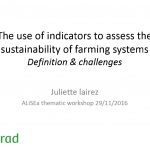
3 downloads
Title of document: The use of indicators to assess the sustainability of farming systems Definition & challenges Authors: Juliette LAIREZ Journal’s name if any: Ministry/Government Agency/Organisation: CIRAD Year of publication: Geographic focus: General Main issues / topics addressed (for example: What is an indicator?; Different types of indicators; Challenges of the assessment……) School of agroecology (if any): Web address to original document (if any): Summary: Presentation for ALiSEA thematic workshop 29/11/2016, Vientiane Capital, Lao PDR Read More
5 downloads
Title of document: Agroecology: A Global Paradigm to Challenge Mainstream Industrial Agriculture Authors: Hector Valenzuela Journal’s name if any: Ministry/Government Agency/Organisation: Department of Plant and Environmental Protection Sciences, University of Hawaii at Manoa, USA Year of publication: 2016 Geographic focus: Global level Main issues / topics addressed (for example: agroecology; agrobiodiversity; biodiversity; farming systems; organic farming; ecological farming; soil management, convention agriculture meet the basic sustainability criteria…) School of agroecology (if any): Web address to original document (if any): Summary: Considerable controversy continues to exist in scientific and policy circles about how to tackle issues of global hunger, malnutrition, and rural economic decline, as well as environmental issues, such as biodiversity loss and climate change adaptation. On the one hand, powerful vested interests, with close ties to government, media, and academic institutions, propose high-input technology-based solutions, speculative and neoliberal “market-based” solutions, and export-oriented agricultural models. On the other hand, an international scientific and grassroots Food Movement has emerged, calling for a redesign of the Global Food System in support of small-scale agroecological farming systems. A call to re-evaluate our current Food Systems was made in 2008 by the International Assessment of Agricultural Knowledge, Science and Technology for Development (IAASTD). Here, using the IAASTD study as a backdrop, we review the recent literature to outline key contentious points in the controversy between the need for high-input and “techno-based” versus agroecological farming models. A critical assessment is made of proposed strategies to protect soil resources, improve nutrient and energy cycles, protect agrobiodiversity, and promote social well-being in rural communities. With an increase in the number of affluent consumers (i.e., the middle class) in the developing world, and with the continued problem of extreme and chronic poverty with other larger sectors of society, Organic Farming and Agroecology models are put forward as a sound social, scientific, and rural development strategy. Read More
1 download
Title of document: Habitat eradication and cropland intensification may reduce parasitoid diversity and natural pest control services in annual crop fields Authors: Deborah K. Letourneau, Sara G. Bothwell Allen, Robert R. Kula, Michael J. Sharkey, John O. Stireman III Journal’s name if any: Elementa Ministry/Government Agency/Organisation: Department of Environmental Studies, University of California, Santa Cruz, California, United States ; Systematic Entomology Laboratory, Beltsville Agricultural Research Center, Agricultural Research Service, U.S. Department of Agriculture, c/o National Museum of Natural History, Smithsonian Institution, Washington, District of Columbia, United States ; Department of Entomology, University of Kentucky, Lexington, Kentucky, United States ; Department of Biological Sciences, Wright State University, Dayton, Ohio, United State Year of publication: 2015 Geographic focus: Global level Main issues / topics addressed (for example: Organic vegetable, parasitoid richnes, Insect sampling, identification, and host range determinations, Habitat elimination around farms and parasitoid diversity……) School of agroecology (if any): Web address to original document (if any): Summary: California’s central coast differs from many agricultural areas in the U.S., which feature large tracts of monoculture production fields and relatively simple landscapes. Known as the nation’s salad bowl, and producing up to 90% of U.S. production of lettuces, broccoli and Brussels sprouts, this region is a mosaic of fresh vegetable fields, coastal meadow, chaparral shrubs, riparian and woodland habitat. We tested for relationships between the percent cover of crops, riparian and other natural landscape vegetation and the species richness of parasitic wasps and flies foraging in crops, such as broccoli, kale and cauliflower, and interpreted our results with respect to the decrease in natural habitat and increase in cropland cover prompted by a local microbial contamination event in 2006. Our key results are that: (1) as cropland cover in the landscape increased, fewer species of parasitoids were captured in the crop field, (2) parasitoid richness overall was positively associated with the amount of riparian and other natural vegetation in the surrounding 500m, (3) different groups of parasitoids were associated with unique types of natural vegetation, and (4) parasitism rates of sentinel cabbage aphid and cabbage looper pests were correlated with landscape vegetation features according to which parasitoids caused the mortality. Although individual species of parasitoids may thrive in landscapes that are predominantly short season crops, the robust associations found in this study across specialist and generalist parasitoids and different taxa (tachinid flies, ichneumon wasps, braconid wasps) shows that recent food safety practices targeting removal of natural vegetation around vegetable fields in an attempt to eliminate wildlife may harm natural enemy communities and reduce ecosystem services. We argue that enhancing biological diversity is a key goal for transforming agroecosystems for future productivity, sustainability and public health. Read More
1 download
Title of document: Alder trees enhance crop productivity and soil microbial biomass in tea plantations Authors: P.E. Mortimer, H. Gui, J. Xu, C. Zhang, E. Barrios, K.D. Hyde, Journal’s name if any: Applied Soil Ecology Ministry/Government Agency/Organisation: Key Laboratory of Plant Biodiversity and Biogeography of East Asia (KLPB), Kunming Institute of Botany, Kunming, China; World Agroforestry Centre, East and Central Asia, Kunming, China; School of Science, Mae Fah Luang University, Chiang Rai, Thailand; Changning Forest Ownership Management Service Center, Baoshang, Yunnan, China; World Agroforestry Centre, Headquarters, Nairobi, Kenya Year of publication: 2015 Geographic focus: Global level Main issues / topics addressed (for example: Agrofoestry, Alnus nepalensis, Crop productivity, Soil bacterial, soil fungi and tea monoculture…) School of agroecology (if any): Web address to original document (if any): Summary: Monoculture farming systems lead to soils depleted of nutrients and diminished microbial functional diversity, disrupting processes crucial to maintaining soil health. The planting of trees in these monoculture systems is one way to improve soil nutrition and biodiversity. Therefore, the objective was how planting the N-fixing tree Alnus nepalensis (7 years old), into monoculture tea (camellia sinensis var, assamica) plantation (32 years old), influences the soil fungal and bacterial communities, and how this impacts on tea productivity. Soil samples (0-15, 15-30, 30-60 cm depths) were collected from plantations of monoculture tea and tea interplanted with A. Nepalensis trees. The samples were analyzed for basic soil properties and nutrients. Phospholipid fatty-acid analyses were conducted on the soil samples to determine the microbial functional groups and biomass of bacterial and fungal communities. Biomass of soil fungi and bacteria were 41% and 10% higher in the tea + A. nepalensis sites than in the tea monoculture sites, respectively. These higher levels were recorded despite there being no changes in the diversity of the soil fungi and bacteria, or the soil nutrition, between the different sites. Tea productivity increased between 52% and 72%, and is attributed to the increases in the soil community biomass. Ectomycorrhizal biomass, as well as Gram-positive, Gram-negative, and actinomycetes bacterial biomass, all increased ranging from 10% to 83%. These groups of organisms have been shown to contain plant growth promoting characteristics, contributing toward increased crop productivity. We provide clear evidence that A. nepalensis in tea plantations promotes the growth and development of the soil microbial communities and that this impacts on above ground productivity. This study highlights the benefits of introducing N-fixing tree species, such as A. nepalensis, into monoculture systems, and how this relates tosoil health and harvest yield. Applied Soil Ecology addresses the role of soil organisms and their interactions in relation to: agricultural productivity, nutrient cycling and other soil processes, the maintenance of soil structure and fertility, the impact of human activities and xenobiotics on soil ecosystems and bio (techno) logical control of soil-inhabiting pests, diseases and weeds. Read More
10 downloads
Title of document: Integrated Pest Management for Sustainable Intensification of Agriculture in Asia and Africa. Authors: Jules Pretty; and Zareen Pervez Bharucha. Journal’s name if any: Ministry/Government Agency/Organisation: Department of Biological Sciences and Essex Sustainability Institute, University of Essex, Wivenhoe Park, Colchester, UK; Department of Sociology and Essex Sustainability Institute, University of Essex, Wivenhoe Park, UK Year of publication: 2015 Geographic focus: Global level Main issues / topics addressed (for example: farmer field schools; integrated pest management; social capital; sustainable intensification; resilience…) School of agroecology (if any): Web address to original document (if any): Summary: Integrated Pest Management (IPM) is a leading complement and alternative to synthetic pesticides and a form of sustainable intensification with particular importance for tropical smallholders. Global pesticide use has grown over the past 20 years to 3.5 billion kg/year, amounting to a global market worth $45 billion. The external costs of pesticides are $4–$19 (€3–15) per kg of active ingredient applied, suggesting that IPM approaches that result in lower pesticide use will benefit, not only farmers, but also wider environments and human health. Evidence for IPM’s impacts on pesticide use and yields remains patchy. We contribute an evaluation using data from 85 IPM projects from 24 countries of Asia and Africa implemented over the past twenty years. Analysing outcomes on productivity and reliance on pesticides, we find a mean yield increase across projects and crops of 40.9% (SD 72.3), combined with a decline in pesticide use to 30.7% (SD 34.9) compared with baseline. A total of 35 of 115 (30%) crop combinations resulted in a transition to zero pesticide use. We assess successes in four types of IPM projects, and find that at least 50% of pesticide use is not needed in most agroecosystems. Nonetheless, policy support for IPM is relatively rare, counter-interventions from pesticide industry common, and the IPM challenge never done as pests, diseases and weeds evolve and move. Crop pests, diseases and weeds pose a substantial challenge to global food security, poverty alleviation and agricultural livelihoods. Approaches of IPM provide an array of methods by which damage can be reduced. We have demonstrated that for farmers across Asia and Africa, IPM projects have been able to deliver substantial reductions in pesticide use coupled with increased yields. Reduced reliance on synthetic pesticides delivers a range of on- and off-farm benefits, including savings, improved public health and improved natural capital on and around farms. Read More

 Asia & Mekong Region
Asia & Mekong Region  Cambodia
Cambodia  Laos
Laos  Myanmar
Myanmar  Other
Other  Vietnam
Vietnam